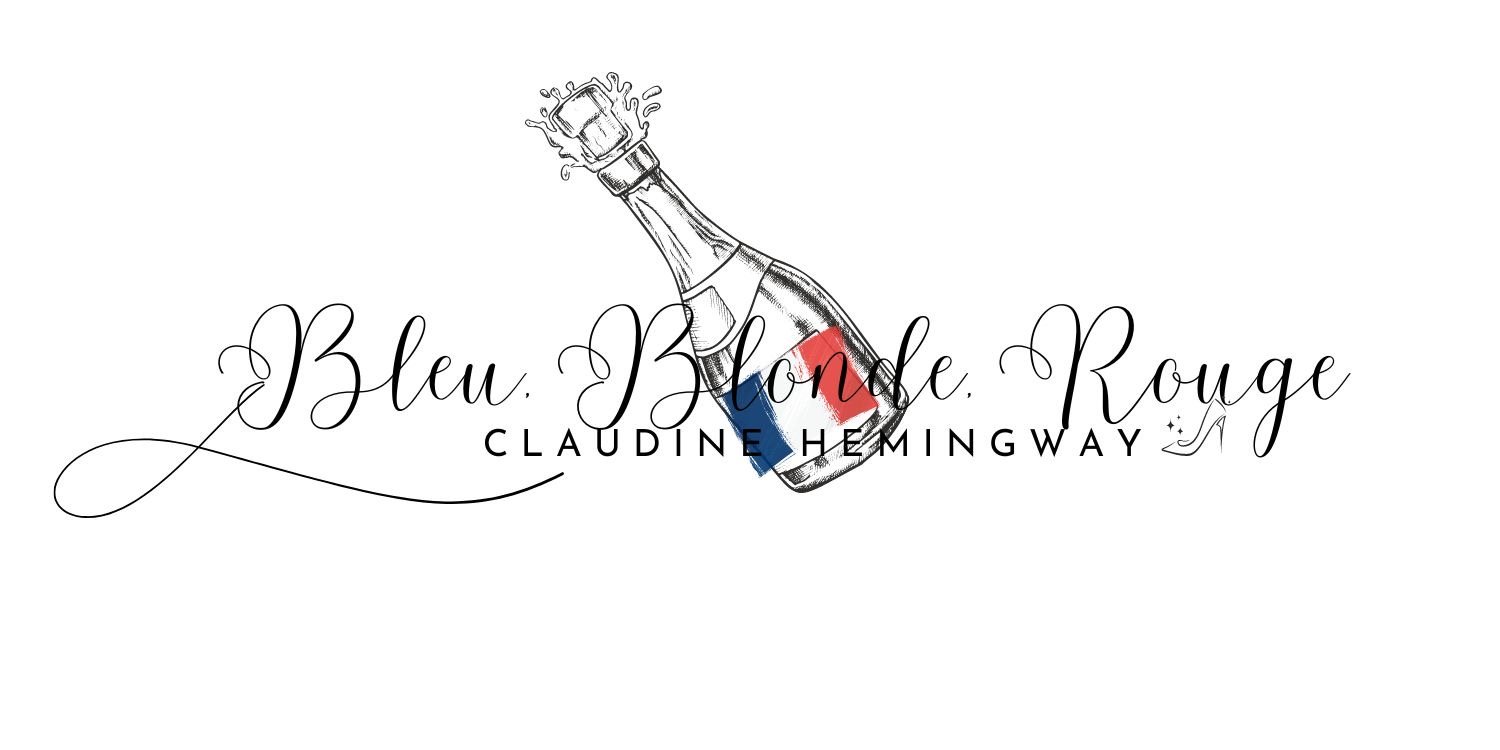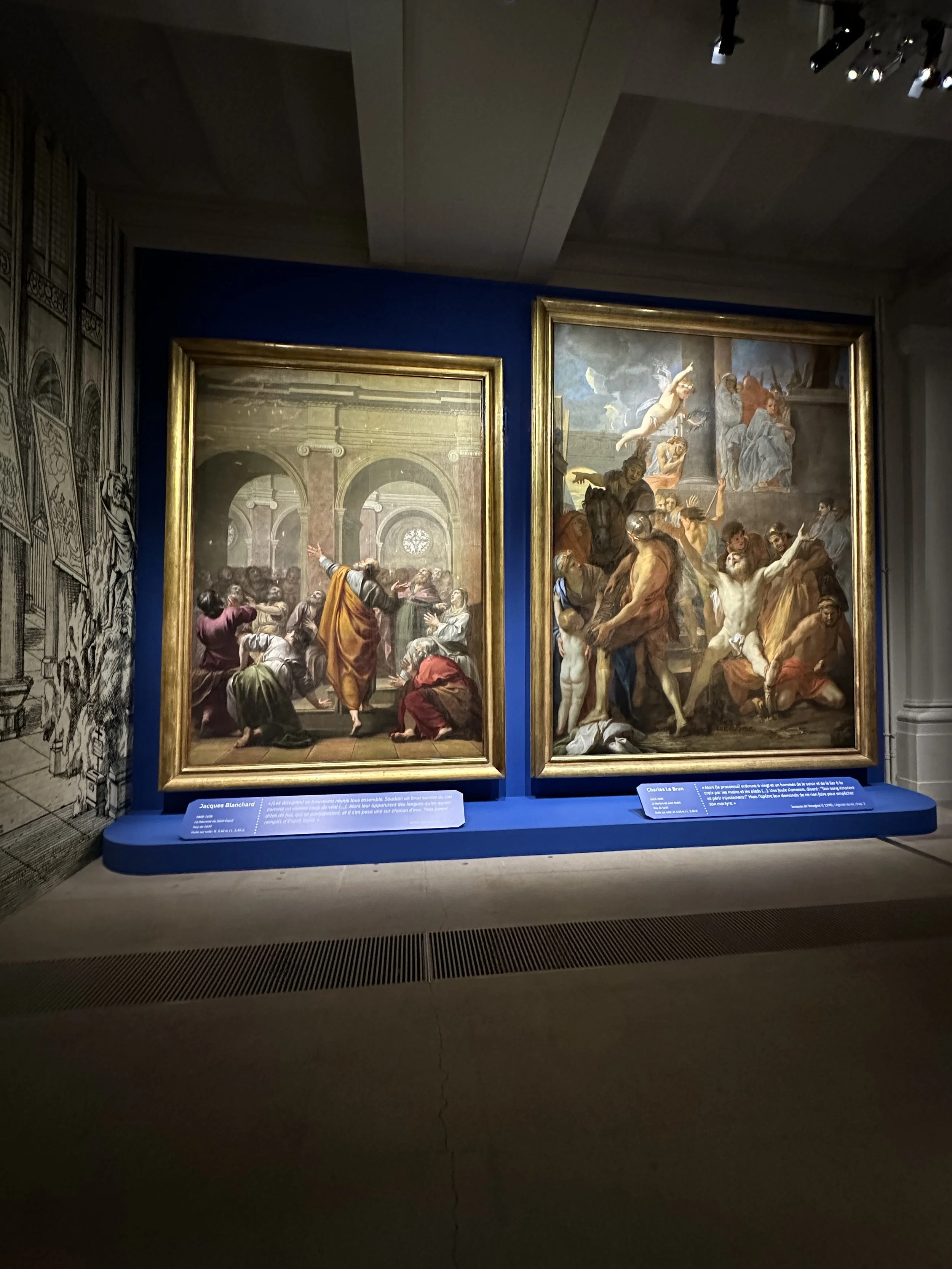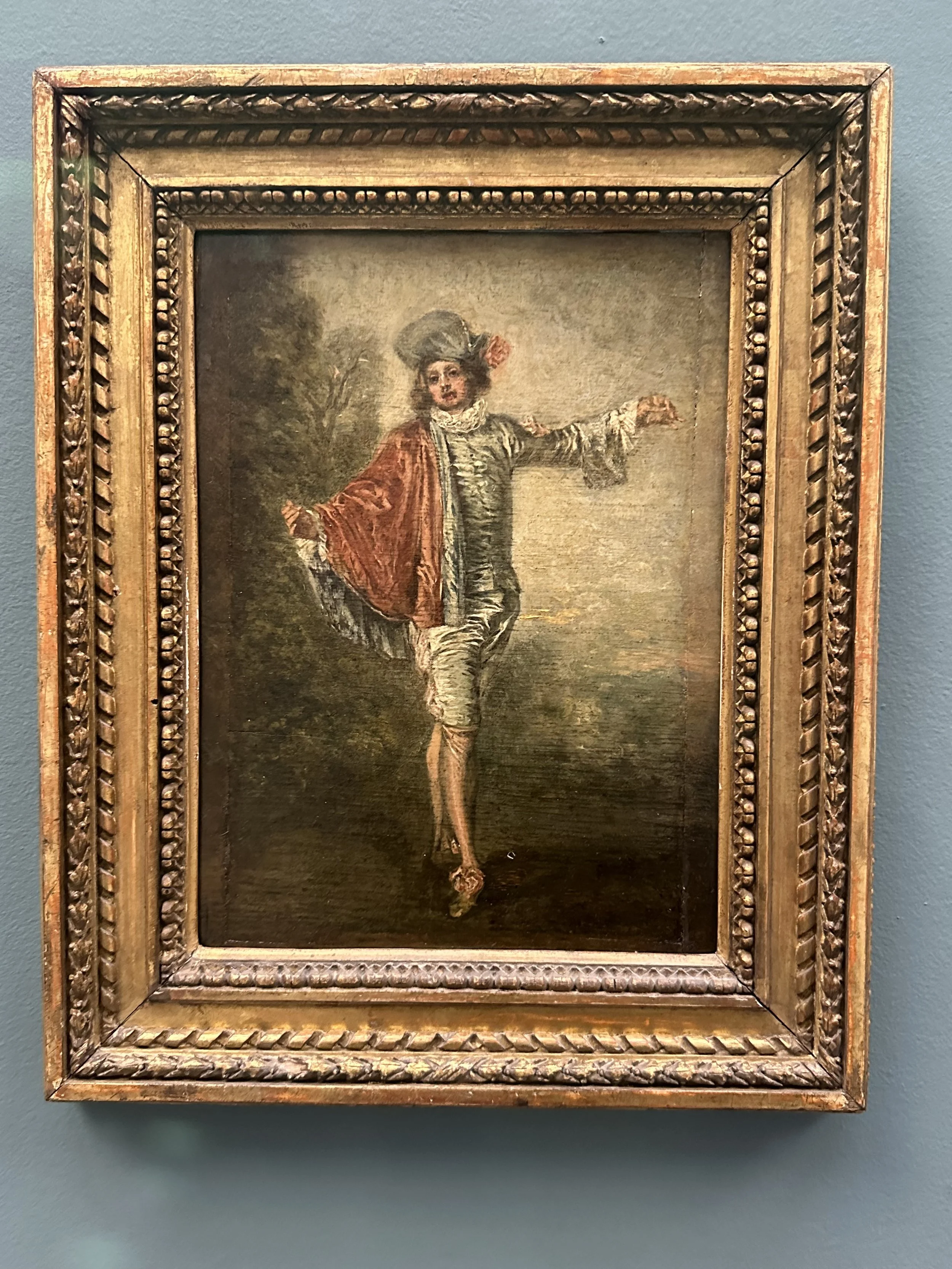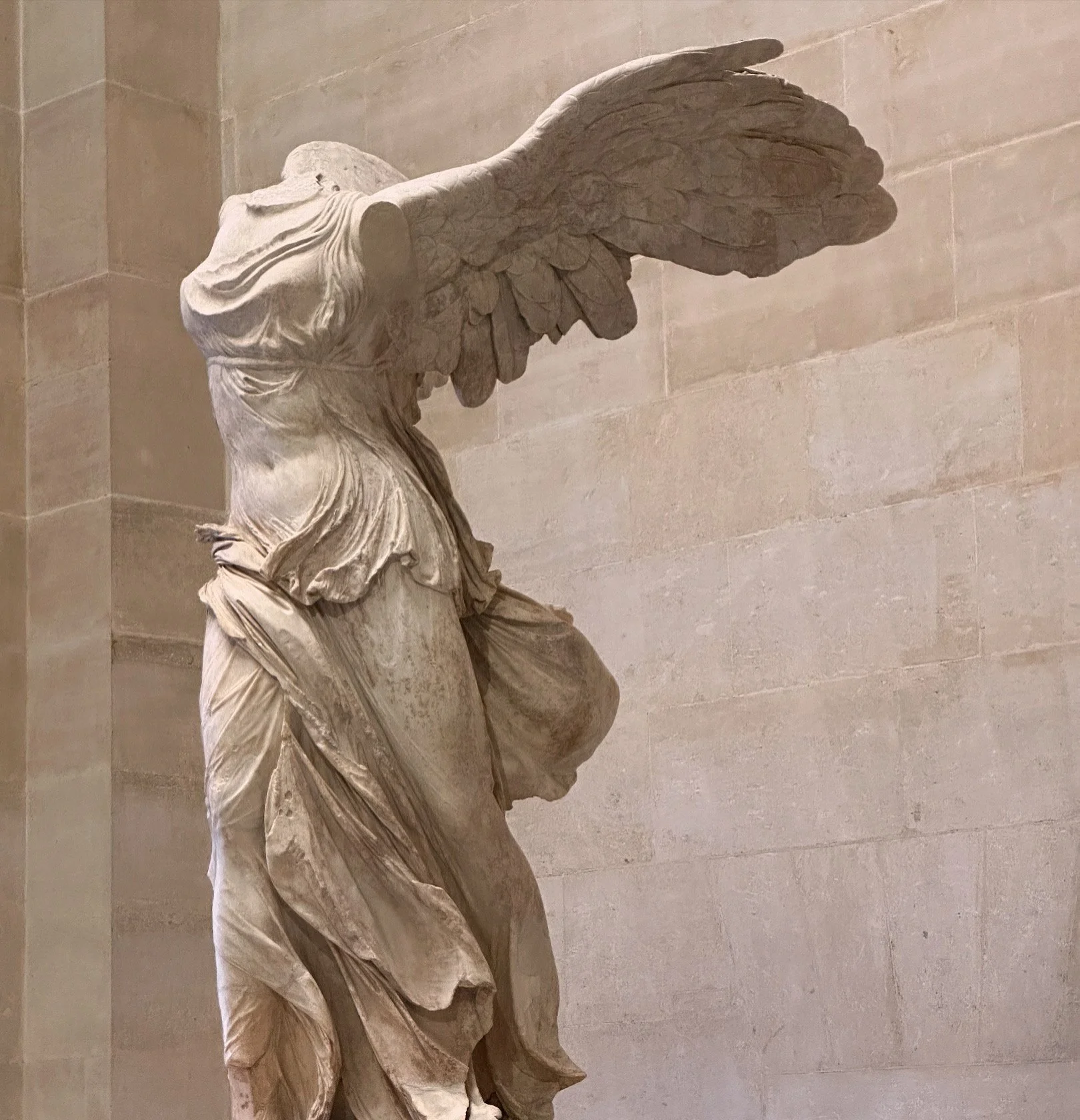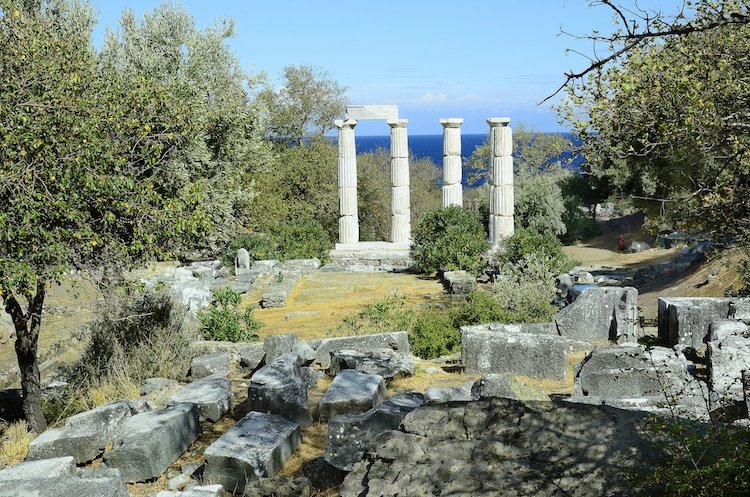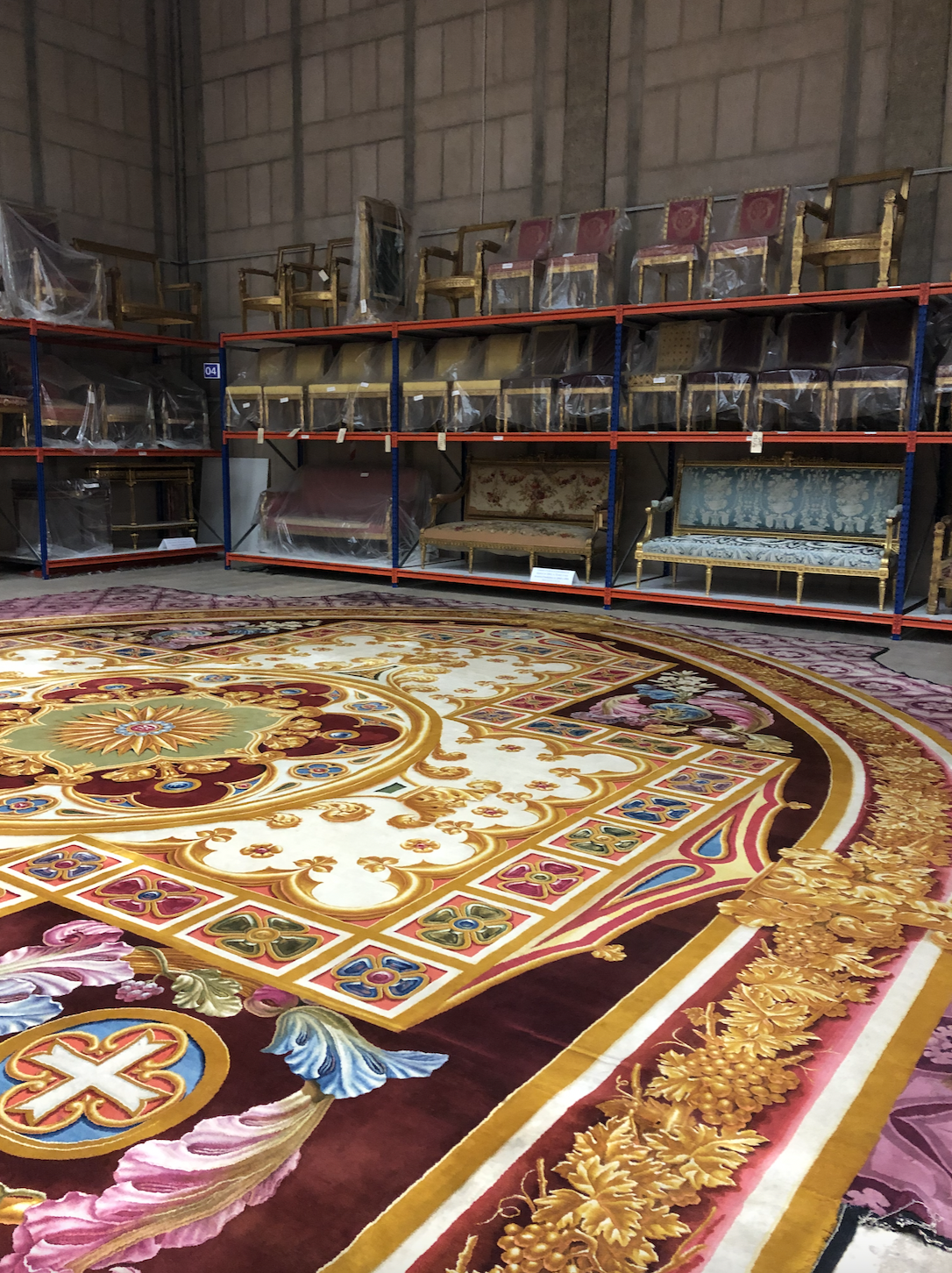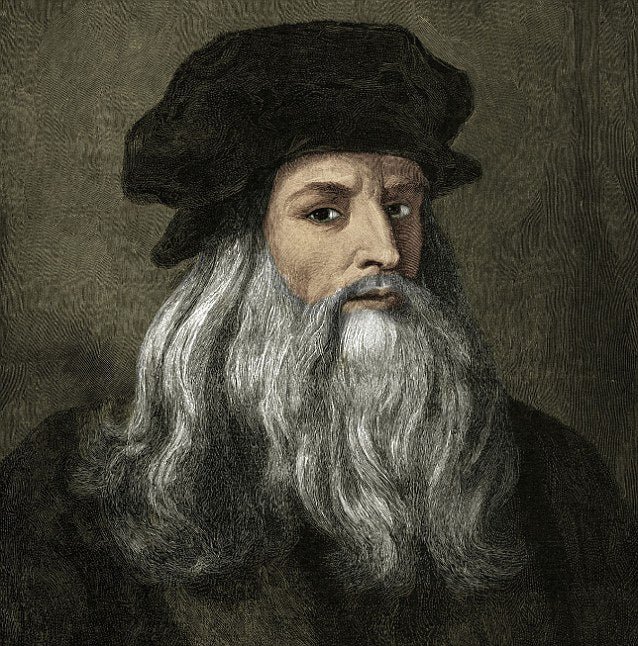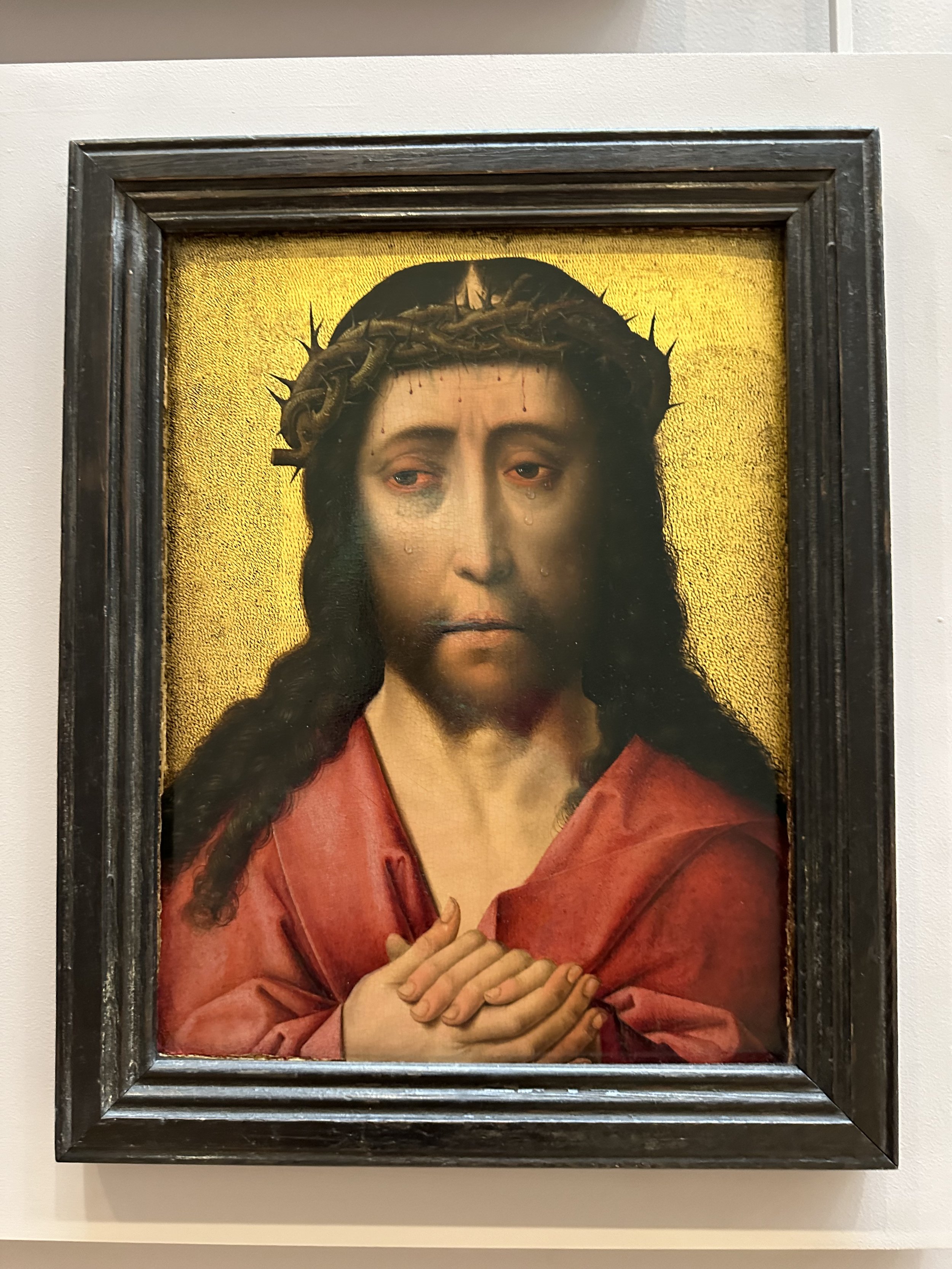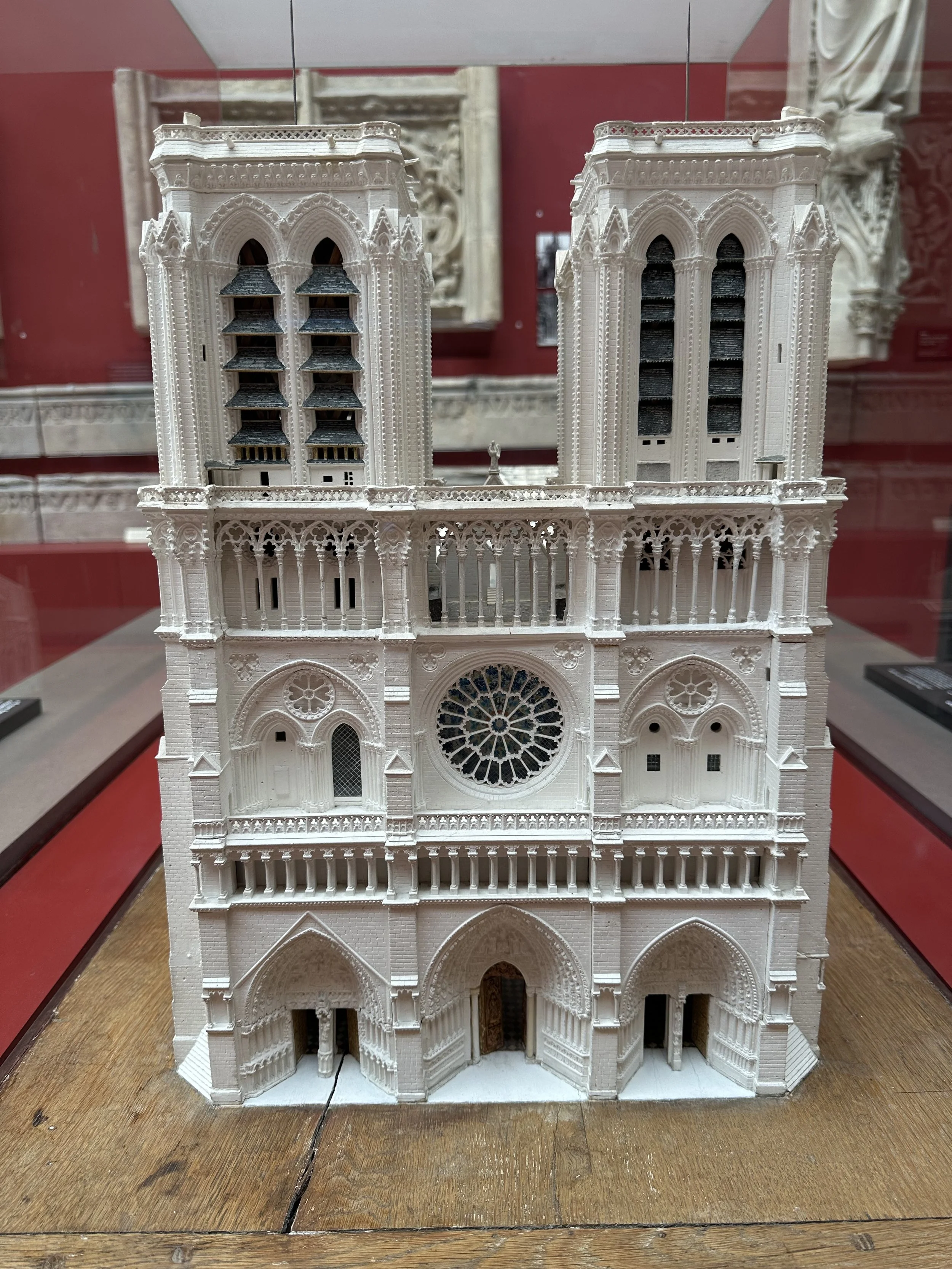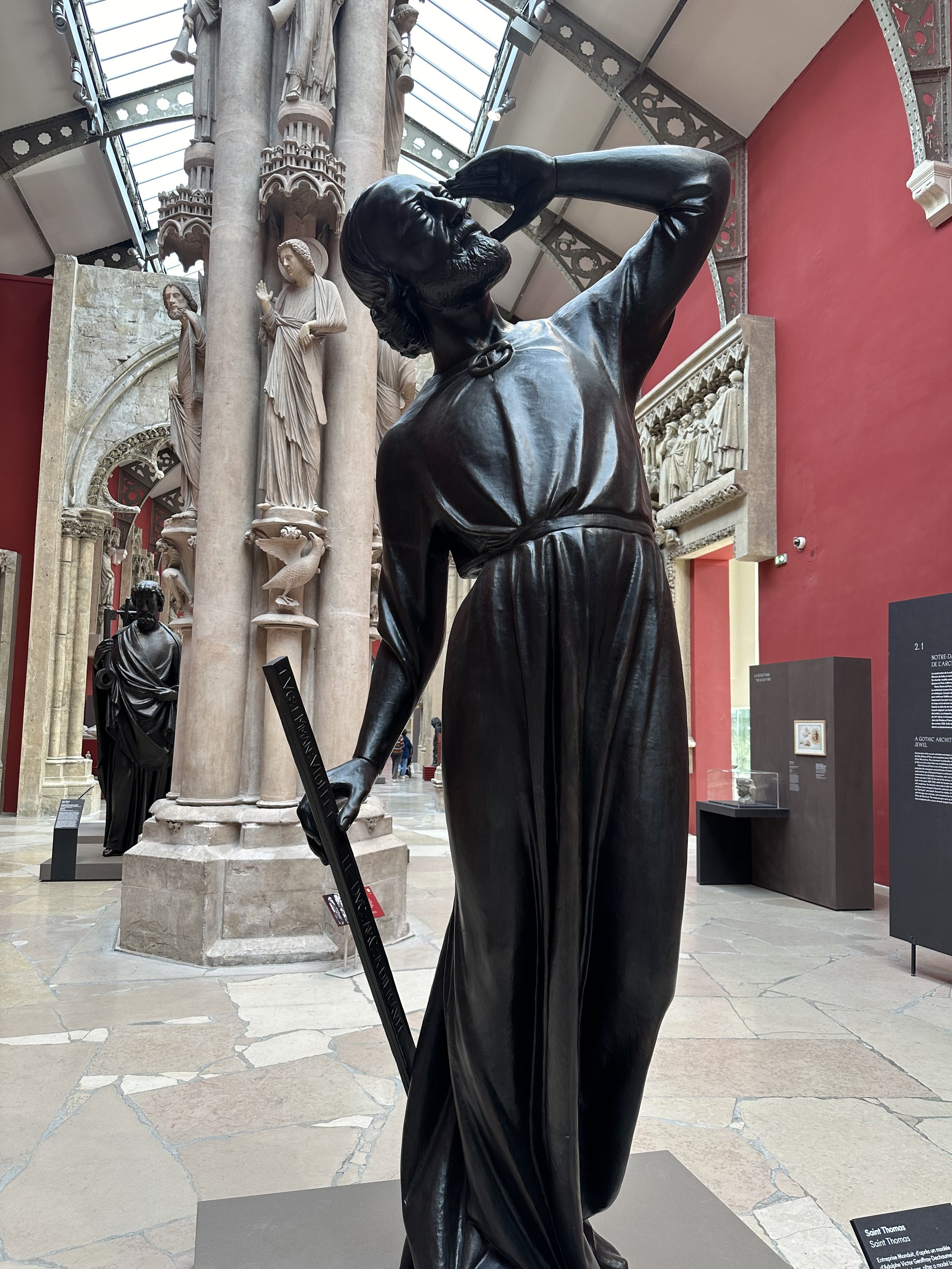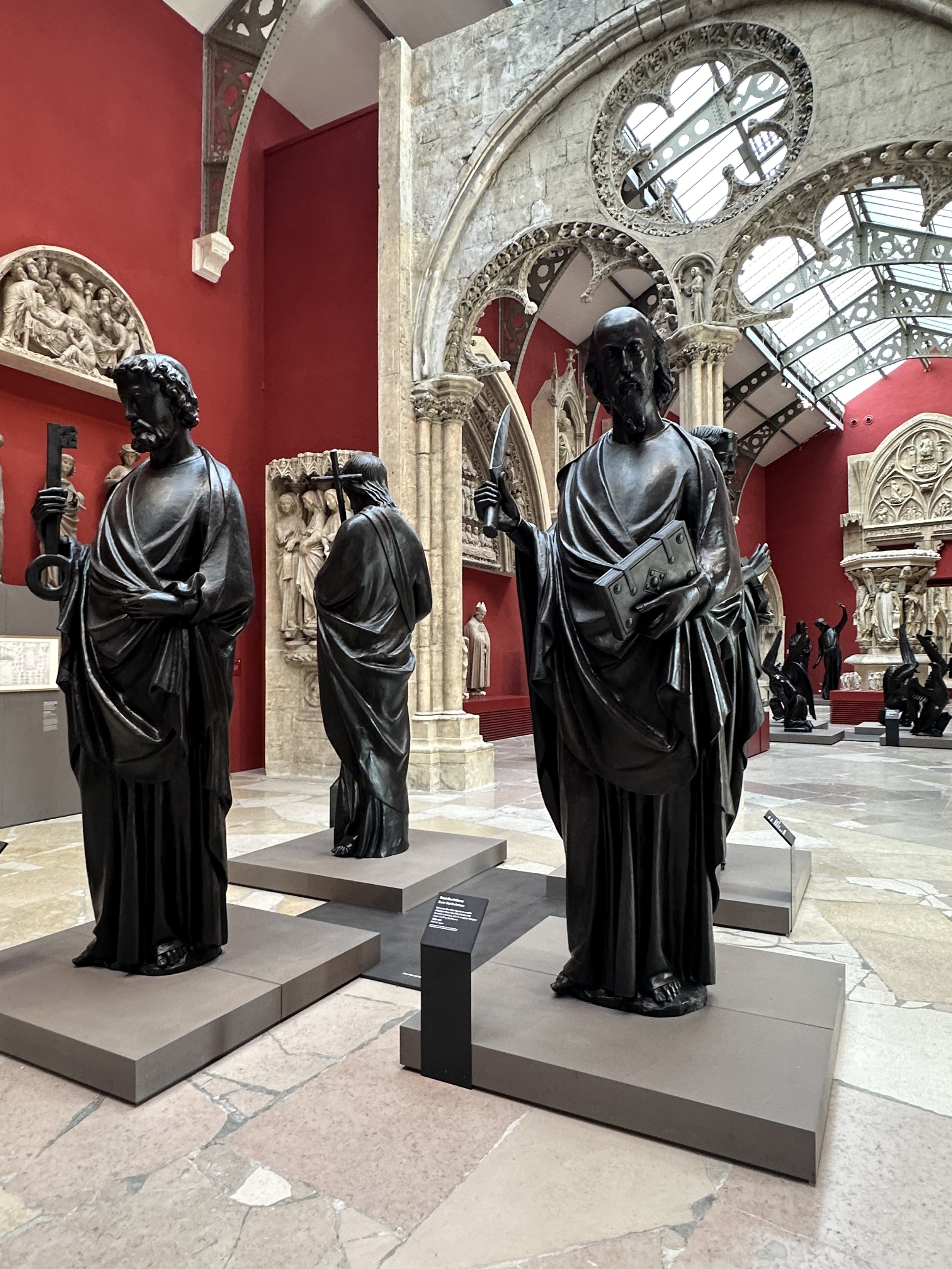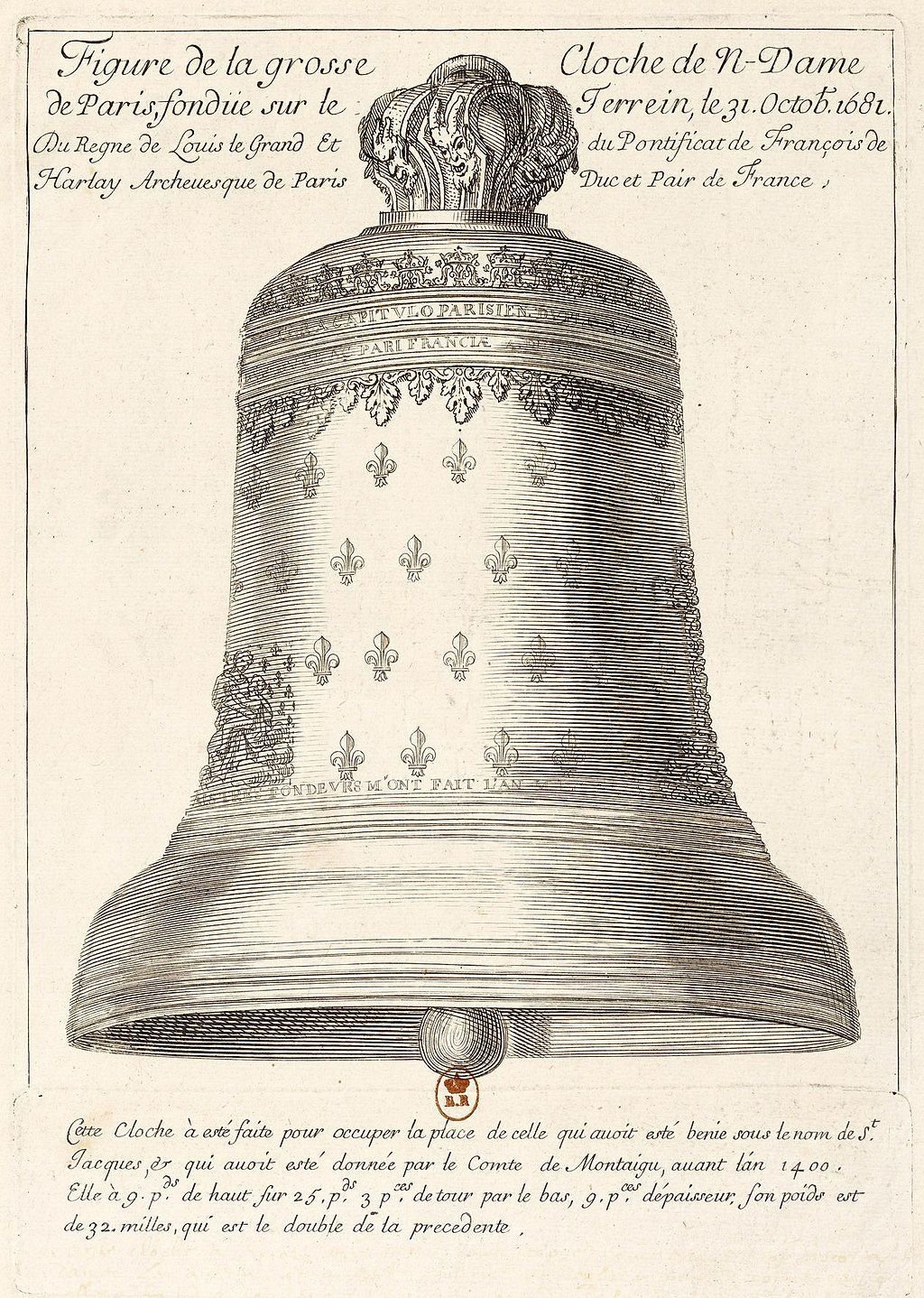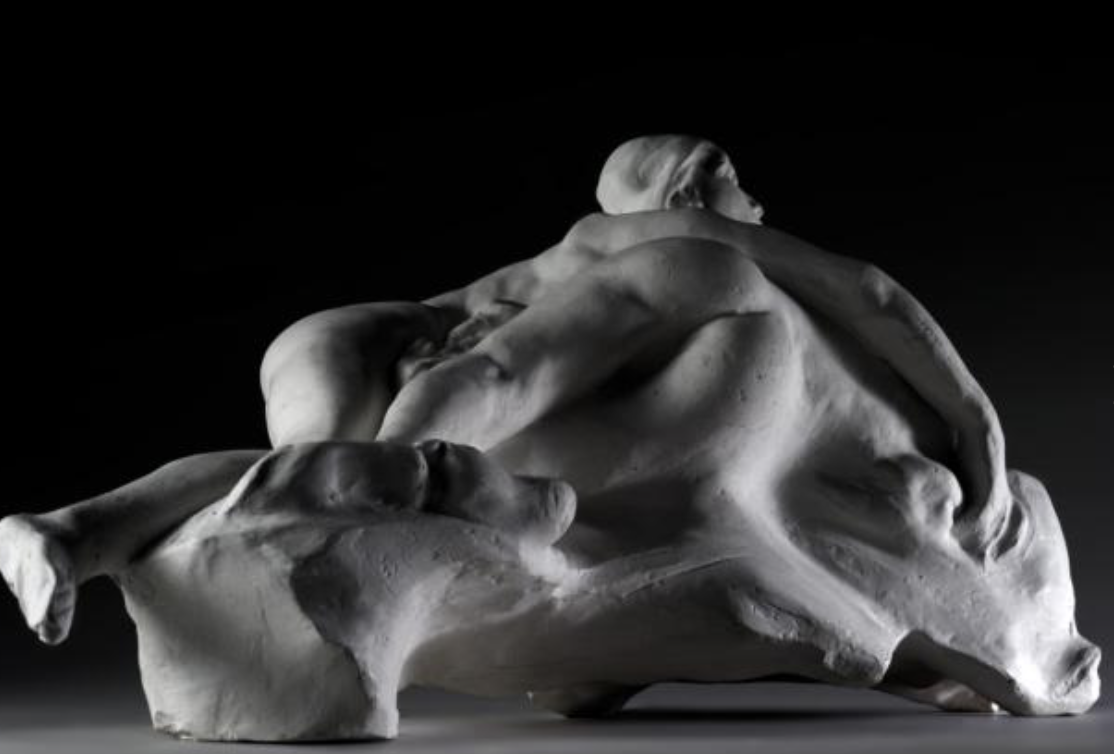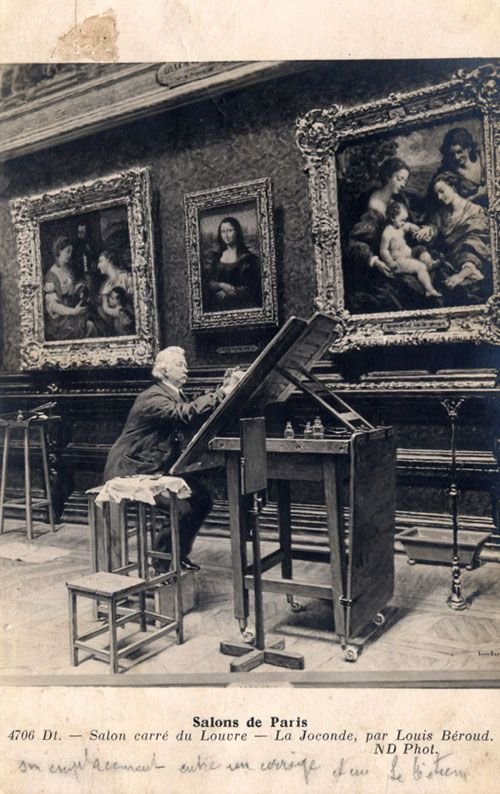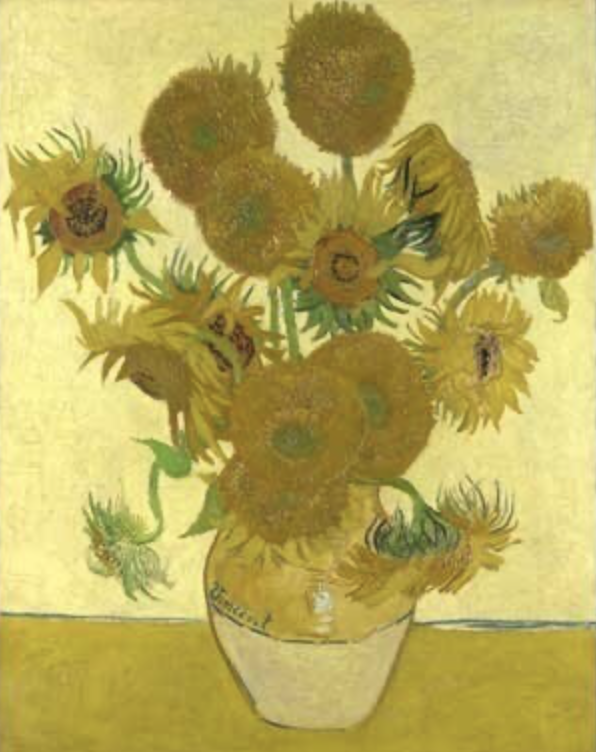On April 15, 2019, the night of the fire a majority of the art was protected in the side chapels and able to avoid the direct flow of water but not the humidity of the water that would sit in the cathedral for hours and days later. On the night of only two paintings were removed, neither was a Mays. On April 19, 15 paintings were removed by the Bovis & Chenue companies and taken to the Louvre. On April 24, 3 others were removed from below the North Tower.
In August 2020, the last two were removed from the transept as it had been to dangerous to walk under until the roof could be secured.
The office of the French Historical Monuments and President Macron decided that whatever had been in the Cathedral on April 14, 2019, must return. Lucky for us, but they still are going to make some changes in how they are returned.
The Restoration Process
The fire allowed the church to restore all 22 paintings held in Notre Dame but it isn’t the first restoration for any of the paintings but most likely the first complete restoration in 300 to 400 years.
Restorations before the late 19th century were always undertaken by artists. Not always the best option especially for our girl Mona Lisa as we have discussed.
From 1731-1781 Restoration by Achille-René Grégoire painter gave each a general cleaning. In 1781 artist Joseph Ferdinand Francois Godefroid added a more in-depth restoration including a new canvas. Cleaned, filled, repainted, and varnished.
1806-1837 Francois Giroux carried out the cleaning and revarnishing. In 1844 Stanislas de Pereira restored 54 paintings in the church and in 1862 42 paintings including 25 mays were sent to the Louvre for cleaning and restoration.
Current restoration
The role of the restorers should be to clean the paintings and bring back the original vision of the artists. Their job is not to add to the painting in their way and whatever they do should be reversible for later restorers.
Bovis Company created a storage location and 2 ateliers in a former airplane hangar. Each painting needed 10 people to move them. Large rolling racks over 20 feet tall were created to hold all the paintings between restorations. Three companies, 50 restorers for the 22 pieces over 24 months
1806-1837 Francois Giroux carried out the cleaning and revarnishing. In 1844 Stanislas de Pereira restored 54 paintings in the church and in 1862 42 paintings including 25 mays were sent to the Louvre for cleaning and restoration.
#2. Cleaning the pictorial layer. Solvents are used to carefully clean the painting. They first test it on the edges of the painting before tackling the body of the work. First, remove the old varnish by slowly thinning it removes the yellow and degraded layer that alters the colors of the painting. If at all possible the original layer of paint is never removed.
Once cleaning is done it takes the longest time to check the structure of the piece and the support. Up to 5 layers.
Top to bottom
Colorful layer and varnish, Preparation, Original canvas, Canvas, and re-canvas, and Chassis or support
#3 treatments to check support and canvas
None of the canvases past the pictorial layer are original. Over time the canvas loses its tension and the adhesive layers begin to separate and even pull away from the support. All of this is examined in the first course of action with the scientific research of the painting. For some of the paintings it can be damaged in patches of the lower levels and a large restructuring isn’t needed.
12 of the 22 paintings needed to be relined. For the damaged one it takes multiple steps. Cartonnage, the protective layers of thin paper are added over the painted face of the work for the safety of the image. The painting is then turned over by many people and the structure is removed. With a solvent brushed onto the outer layer of canvas the damaged layers are peeled away. Once the old layers are removed they can clean the back of the original canvas.
The adhesive is reapplied and new canvases are added to the back. The protective paper on the image is removed and placed back onto the back. All of the structures have been replaced, none are original. Eight of the pieces didn’t need a full relining. And 3 from the 17th century have never been relined.
#4 Reintegration of painting and revarnish
A layer of varnish is added and any holes are filled and returned to frames. Most of the frames are dated to the 20th century. VLD replaced many in the mid-19th century when the styles had changed. Only 3 frames had to be replaced. Most were scrubbed clean and restored and new gilding was added.
Les Mays in the cathedral pre and post-fire that were restored. 13 of the 76 Les Mays were still in the cathedral.
1634 The Descente of the Holy Spirit by Jacques Blanchard
Oldest in ND and 5th in the series of 76. The painting represents the Pentecoste. Banchard, a personal painter to Louis XIII was known as the “French Titian”. Saint Peter is viewed from behind looking up at the Holy Spirit which is just a golden cloud on the right side of the painting. In 1844 it was in complete dilapidation and relined and cracks were filled and restored.
1635 Saint Pierre Healing the Sick with his Shadow by Laurent de La Hyre
First of two Le Mays by Hyre. also 1637. The coat of arms of the two donors, Antoine Crochet and Claude de Rosnel on the lower left corner. The restoration of the red, blue, and orange of the cloth is striking compared to the previous image.
1637 The Conversion of Saint Paul by Laurent de La Hyre
Depicting the story of Paul on his way to Damascus to persecute the Christians and tossed to the ground when hearing Christ which led to his conversion. The restoration revealed feathers on the helmets that disappeared under the layers of dirt.
It was placed in the Eglise Thomas d’Aquin from 1806-1962 when it returns to Notre Dame
1639 The Centurian Corneille at the feet of Saint Pierre by Aubin Vouet
Aubin is the younger brother of Simon one of the most prolific painters under Louis XIII and XIV. Aubin painted three Le Mays in 1632, 1639 & 1640, more than any other artist. Corneille had a vision of the Virgin that told him to go to Jaffa to find Pierre. This scene captures the moment when Pierre tells him to rise as he is also just a man.
During the research on the painting, they saw that Vouet made many changes to the arm and hand of Corneille. Hands and feet can be very difficult to paint.
When Notre Dame reopens the painting will move to the Chapel of Sainte Genevive on the south side.
1642 The Preaching of Saint Pierre in Jerusalem by Charles Poerson
Student of Simon Vouet and close friend and painter of Cardinal Richelieu which helped his entry into the world of the Goldsmith Guild and two selections for the Les Mays. 1642 and 1653. Person depiction of the twisting columns that continue into the spine of the man who wraps himself around them.
1643 The Crucifixion of Saint Pierre by Sébastien Bourdon
Pierre didn’t feel he was worthy to be crucified on the cross like Jesus so he asked to be tortured upside down as depicted in the diagonal focus of this painting giving off a state of confusion. Above an angel holds a crown that will soon be atop his head.
Once in the Chapel of Sainte Genevieve, it will be moved to the Chapel of Saint Denys on the Southside.
1647 The Martyrdom of Saint André by Charles Le Brun
At just 28 years old, Le Brun was selected for his first of two Mays. The next year under the queen mother Anne of Austria he created the Royal Academy and by 1664 was the painter of King Louis XIV and later the mastermind behind the decor of the Chateau de Versailles.
Saint André, brother of Saint Pierre and disciple of Jesus known for being crucified on an X-shaped cross. Instead of placing him on the cross, Le Brun depicts the moments before as they have just ripped off his clothes and prepared him to be tortured. André’s arms and legs are apart recreating the cross as he looks up at the angel gazing at him with the palms of heaven.
1650 Saint Paul Blinding the False Prophet Barjésu by Nicolas Loir
Nephew of a Goldsmith who helped grease the wheels and is selected as the painter of 1650. In the city of Paphos in Cyprus where Paul was preaching to the proconsul Sergius Paulus when he was confronted by the magician Barjésu (Bar-Jesus). The Holy Spirit then blinded Barjésu seen in pink in the painting. The event prompted Paulus to convert to Christianity.
During restoration, they found a no 22 on the lower left corner noting that it is the 22nd in the collection. After it was sent to the Louvre in 1797, it remained and was placed on display in the Sully wing until it was returned to Notre Dame in 1963.
1951 The Stoning of Saint Etienne by Charles Le Brun
The second of Le Brun’s paintings is held in Notre Dame. Saint Etienne a key figure in the churches of Paris and the namesake of the first church on the Ile de la Cité where Notre Dame now stands.
Saint Etienne was condemned to death by stoning in Jerusalem seen on the left side of the painting. The first Christian martyr is on the ground while his executioner pulls his arm back to strike him and bystanders look on. Etienne looks up to the angels and Jesus and his father. The top 10 inches of the painting were created later and sewn to the canvas to match the approved dimensions.
1655 The Flagellation of Saint Paul and Saint Silas by Louis Testelin
Testelin like a majority of the first paintings listed was a student of Simon Vouet and a founding member of the Royal Academy with Charles Le Brun. The last painting Testelin created depicts the life of Saint Paul as he passed through Macedonia in the year 50. Arrested, tortured, and imprisoned before his release. During the investigation process of the painting, they found that Testelin added layers of red paint under the body of the painting and pink under the sky.
1670 Sant André Quivering with Joy at the Sight of his Torturer by Gabriel Blanchard
A defender of color and follower of Rubens, Blanchard depicts the saint in the moments before his torture. Positioning his body in the form of a cross as he looks up to the man who will torture him. It is the largest of all the Mays paintings and will be hung in the north transept when it returns to Notre Dame.
1687 The Preaching of the Prophet Agabus to Saint Paul by Louis Cheron
Son of artist Louis Chéron who also painted two paintings in 1676 & 1678. As with most of the first thirty paintings, the Acts of the Apostles are depicted once again. A disciple of Jesus, Agabus was sent to Jerusalem to preach snd where he met Paul. Agabus is in the center in white and raises his arm to direct your attention to the dove above, the only depiction of the Holy Spirit in all of the Mays. Paul is on the left in green and red the color of the cardinals and the martyr’s blood.
1702 The Sons of Scéva beaten by the Ponélé by Matthieu Élias
From the Acts of Apostles in Ephesus, Élias shows the son of a high priest Scéva who was trying to imitate Saint Paul but a man comes across him and his seven sons. The scene turns violet quickly as others flee in fear. Above Paul can be seen in red healing a possessed man. From the dark scene below to the brightness below in theory and colors are striking. The painting was rolled up and deposited in the Louvre until 1963.
Life of the Virgin Tapestry
Fourteen beautifully woven large tapestries were created between 1638 to 1657 under the instruction of Cardinal Richelieu with Michel Le Masle, canon of Notre Dame after the Vow of Louis XIII.
The first two tapestries by Philippe de Champaigne, Birth of the Virgin and Presentation of the Virgin at the Temple completed on November 13, 1640. In 1650 the Canon of the church resumed the project and ordered 12 additional tapestries. One was designed by Jacques Stella and Charles Poerson who created 11 of them.
All were created in Paris at the atelier of Pierre Damour except one. The Mariage of the Virgin was woven in Brussels after the design of Jacques Stella. Inaugurated and hung April 3, 1658, in the choir.
Each includes the cipher and coat of arms of Richelieu and the coat of arms of Masle in the lower corners.
Robert de Cotte’s renovations under Louis XIV in 1730 caused the disappearance of the tapestries, paintings, and rude screens. In 1739 the tapestries were sold to the Strasbourg Cathedral. Displayed during the Advent until the Epiphany.
